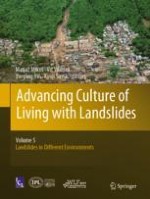2017 | OriginalPaper | Buchkapitel
Understanding the Chandmari Landslides

verfasst von : Nirmala Vasudevan, Kaushik Ramanathan, Aadityan Sridharan
Erschienen in: Advancing Culture of Living with Landslides
Aktivieren Sie unsere intelligente Suche, um passende Fachinhalte oder Patente zu finden.
Wählen Sie Textabschnitte aus um mit Künstlicher Intelligenz passenden Patente zu finden. powered by
Markieren Sie Textabschnitte, um KI-gestützt weitere passende Inhalte zu finden. powered by
